In the early 2000s, Antalya was Türkiye’s fastest growing city, with numerous high-rise apartment blocks springing up rapidly on the outskirts of the city. However, the city center of Antalya was a different story, with the country’s historic buildings preserved.
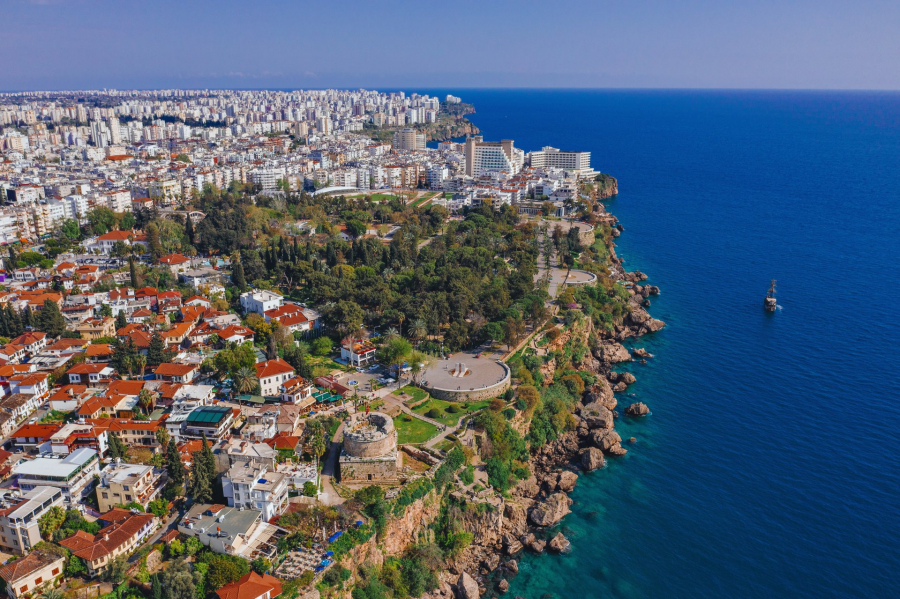
Panoramic view of Antalya city from above
Türkiye’s summer tourism capital, Antalya, takes its visitors on a journey into the past in the ancient town of Kaleiçi, home to Hadrian’s Gate, Yivli Minaret, Kesik Minaret, ramparts, Sufi ashrams, ancient houses and narrow streets. Antalya dates back to ancient times and today attracts over 10 million tourists a year, highlighting its archaeological and natural beauty.
KALEIÇI Old Town
The most famous area in Antalya is Kaleiçi, which takes its visitors on a historical journey thanks to its narrow cobblestone streets and houses bearing traces of Greek, Seljuk and Ottoman architecture.

Kaleiçi, home to 127 citadels, fortresses, mosques, mosques and wells, 356 civil houses, 93 gardens and 25 protected natural assets, has become Antalya’s shining star in recent years. An archaeological site since 1973, Kaleiçi also attracts visitors with its small antique shops, exquisite hand-crafted carpets, as well as its yacht harbor and historic restaurants serving local and international cuisine.

Runner-up Bui Phuong Nga checks in at a beautiful carpet shop in the old quarter
There is also Hadrian’s Gate, commonly known as Üçkapılar (Three Gates). The majestic Hadrian’s Gate was built for the Roman emperor’s visit to Antalya in 130 AD. It is the only triumphal arch that has survived intact since the Roman era, nearly 2,000 years ago. It consists of three arched gates, built entirely of white marble in addition to the columns. The ornate gate is surrounded by towers that add to the charm of this historic landmark in Antalya.
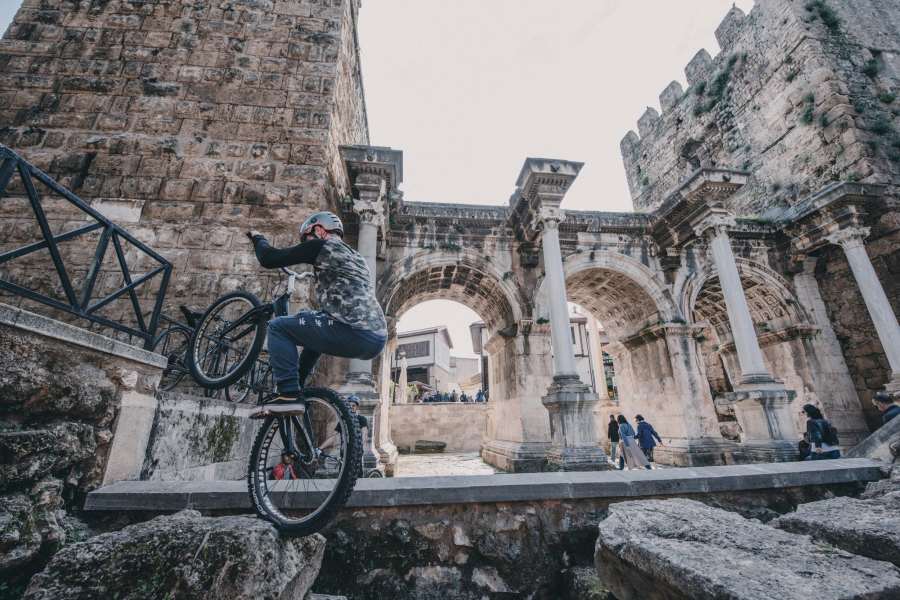
Roman port
The Roman harbor at the foot of the Kaleiçi slopes was Antalya's lifeline from the 2nd century BC until the late 20th century, when a new port was built about 12km west of Konyaaltı Plajı. The harbor was restored in the 1980s and is now a marina.
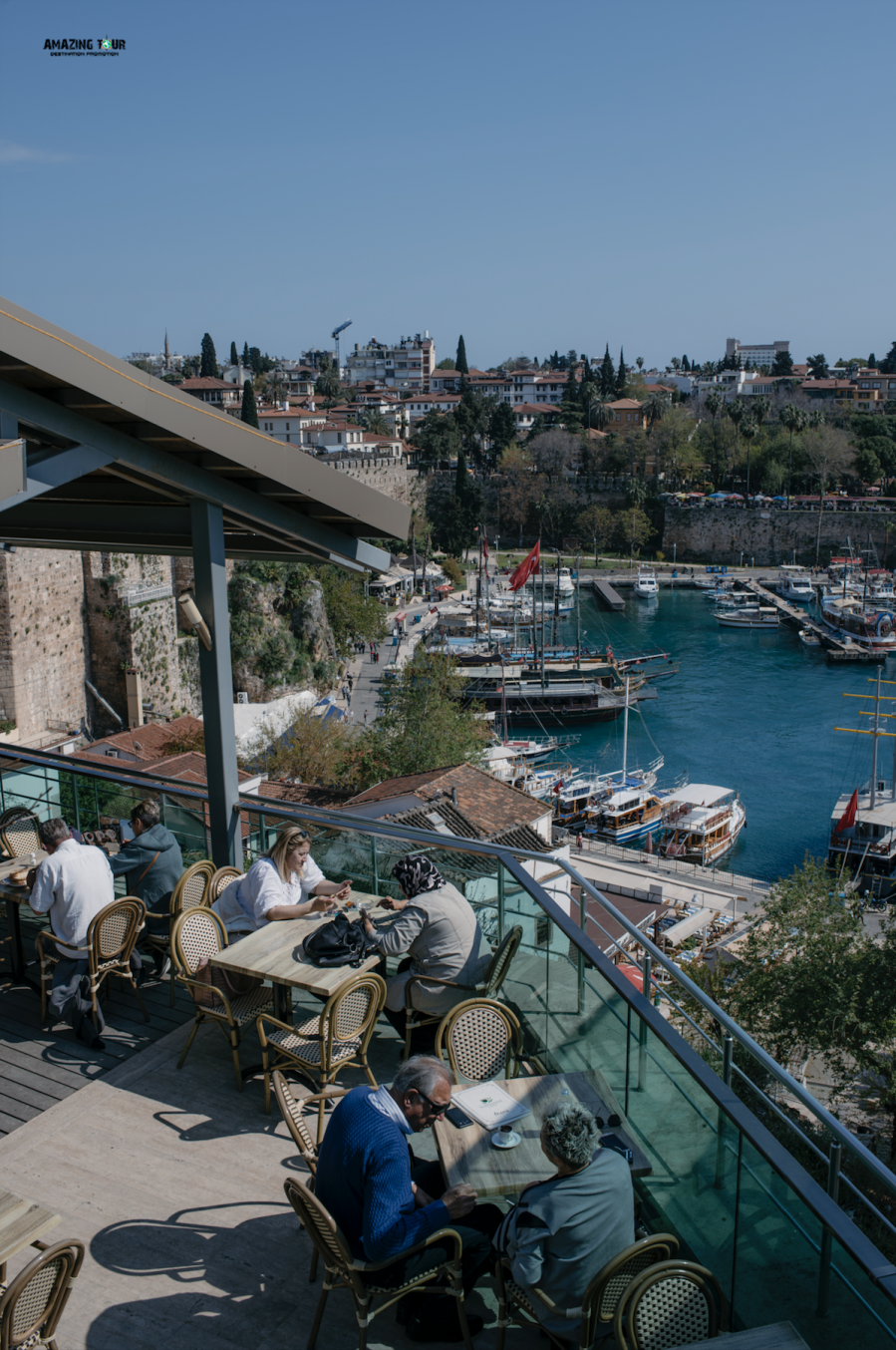
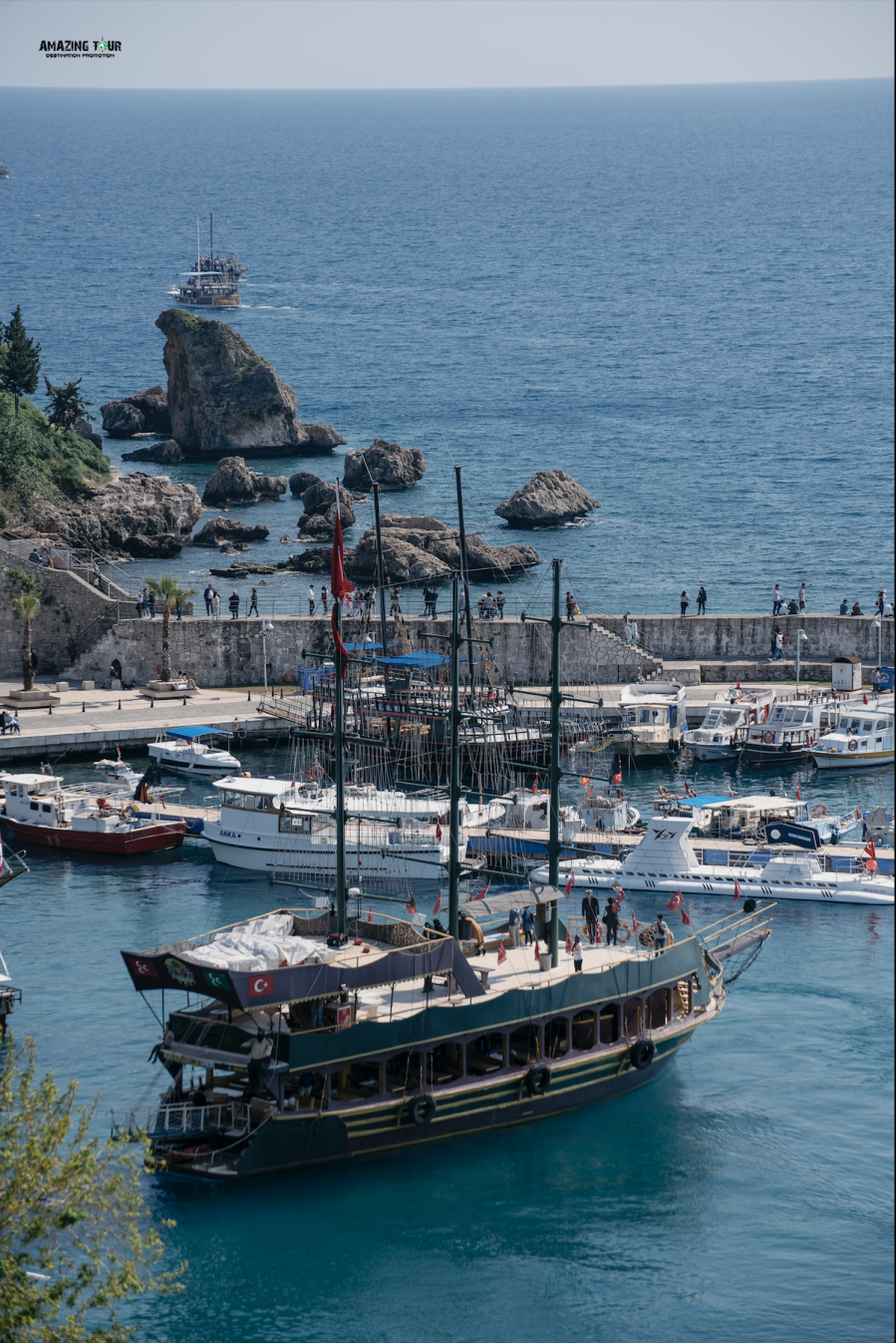
The harbor is surrounded by tea gardens, bars, restaurants and cafes. On the southern edge of the harbor, Cumhuriyet Meydanı, there are many tea gardens with great views of the harbor. You can enjoy seafood and drinks under the trees while watching the boats go by.
Antalya Museum

The Antalya Museum, located about 2km west of the Kaleiçi district, is a must-see for any visitor to Antalya. It covers everything from the Stone and Bronze Ages to Byzantium. The exhibition features artifacts excavated from the area’s ancient cities in Lycia (such as Patara and Xanthos) and Phrygia, while the Main Hall displays exquisite statues of the 15 Olympian gods, many of which are still in near-perfect condition. Most of the statues were found in Perge.
Yivli Minare
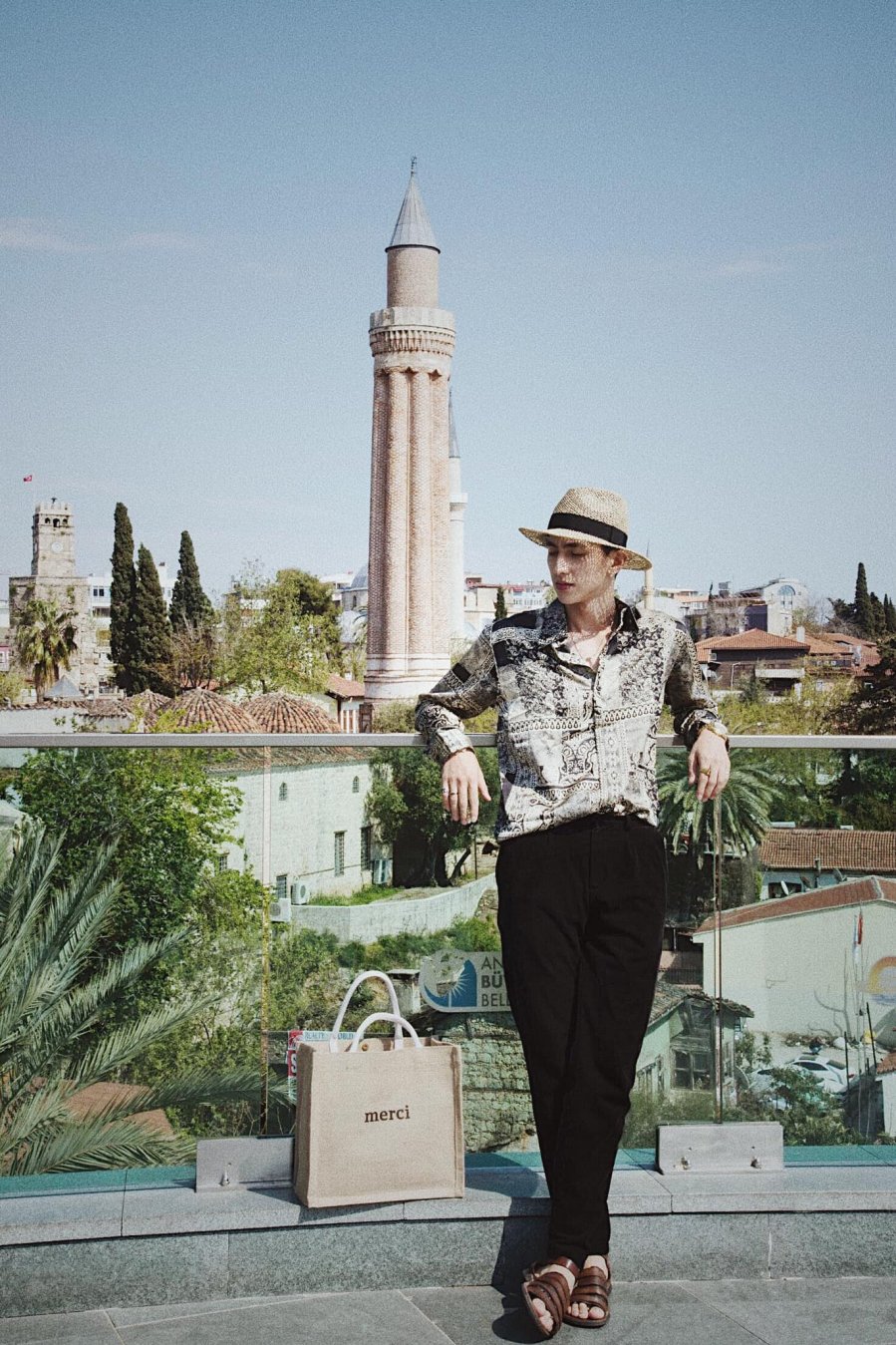
Actor Binh An took a photo with the Yivli Minare tower as the background.
This distinctive minaret, erected by Seljuk Sultan Aladdin Keykubad I in the early 13th century, is a symbol of Antalya. The adjacent mosque (1373) to the minaret is still in use today.
Within the Yivli Minare complex is a 13th-century Imaret Medresesi crafts centre, restored from a monastery. In addition, the wide square area to the west with the equestrian statue of Atatürk is also a tourist attraction.
Termessos Citadel

The castle is located on Gulluk Mountain, now part of Gulluk National Park and is built entirely of stone, at an altitude of more than 1,000m above sea level. To get there, one must travel to the national park by own means, there are no buses or local services to this place.
History does not record the exact date of this citadel's existence, nor is it known when the people began to live and then disappeared here. Currently, the citadel is only in ruins, the most intact place is the city-state's theater. Based on the scale of the theater, people predict that the city-state once had about 60,000 citizens. This place was once called "Eagle's Nest" by Alexander the Great and he constantly harbored the intention of conquering it.
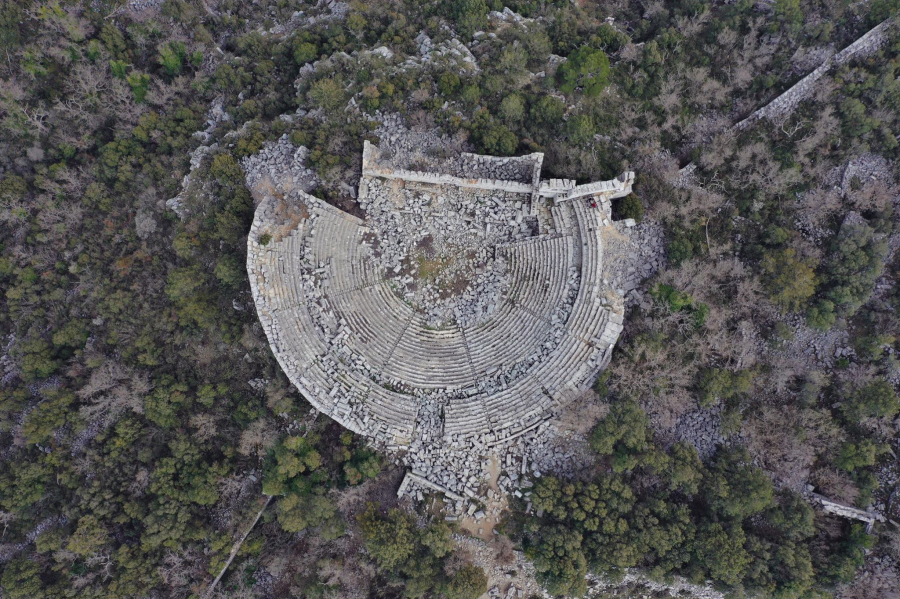
According to legend, during its heyday, Termessos was known as the “impenetrable” city due to its prime location on a mountaintop. It is believed that the city was abandoned around 200 BC due to an earthquake that devastated the area and cut off its water supply. Because of its rich history and cultural heritage, Termessos is considered one of the best preserved cities in Turkey.

































